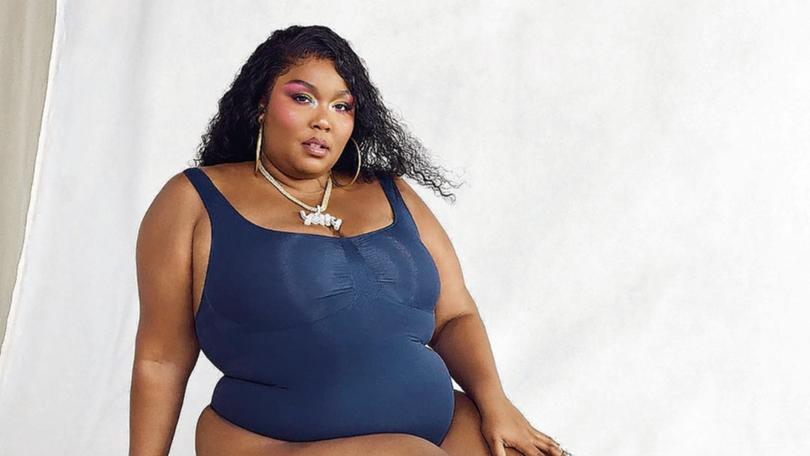KATE EMERY: Body positivity is in trouble and the kids aren’t all right

The kids were supposed to be all right.
Raised by the women who grew up being told that nothing tastes as good as skinny feels, this generation were the body positivity warriors who said no to size zero and fatphobia.
This was the generation that rejected diet culture, reclaimed the word “fat” and celebrated the likes of plus-sized diva Lizzo as a hottie because of, not despite, her size. Even social media, the hall of mirrors where self-confidence goes to die, felt for a while like it had been overtaken by a new brand of influencers whose bodies were remarkable only for how closely they resembled those you might see in the real world.
Sign up to The Nightly's newsletters.
Get the first look at the digital newspaper, curated daily stories and breaking headlines delivered to your inbox.
By continuing you agree to our Terms and Privacy Policy.But the body positivity movement is in trouble, with plus-sized bodies once more disappearing from the catwalk, Ozempic trimming any hint of a wobble from every red carpet celebrity and TikTok full of young people talking about “leggings legs” — a term to describe the supposedly ideal body shape for athletic wear.
Step into the Art Gallery of WA right now and you’ll see what I’m talking about. The gallery is currently offering an unofficial peek inside the head of today’s young people, thanks to The West Australian Pulse exhibition, which showcases the best of the State’s Year 12 visual arts graduates.
The first work you see is likely to be Sweet on the Hips, by Aveley Secondary College student Acacia Davis. The sculpture of a cereal box has the body of the artist’s mother on one side, after several weight loss surgeries, and, on the other, the contorted body of her sister, to highlight “the impact of diet culture on childhood”.
It’s not the only work to confirm diet culture is still hurting today’s teens and the themes echo those unearthed in last year’s Commissioner for Children and Young People WA survey, which found body image was a major source of stress for even girls of a healthy weight.
Then there’s the recent dummy spit by Lizzo.
The About Damn Time singer fuelled speculation last month that she was poised to do what I’d do if I ever become super rich (retire immediately to live on an island where a butler makes cocktails in my mouth) when she wrote on social media: “I QUIT”. She said she was tired of “being the butt of the joke every single time because of how I look”.

Lizzo may have subsequently walked it back faster than Michael Jackson during Billie Jean but, if you want a hint of what she was reacting to, take a look at the comments on that social media post.
“She’s able to quit her whole career but not KFC,” wrote one “fan”.
“Keep your chins up,” wrote another.
Huge losses to the stand-up comedy circuit, right there.
Famous people attract bile, criticism and, frankly, nutters, like s..t attracts flies. But the fatphobia directed Lizzo’s way is shocking even to a social media veteran who’s been in the trenches since MySpace was considered cutting edge.
The question is whether Lizzo’s dummy spit was just the result of a bad day or if something really has changed.
I think it’s the latter and it’s not just about one art exhibition or one singer.

In the world of fashion, the talk for at least a year has been all about the return of skeletally thin models to the catwalk after an industry push to promote healthier bodies.
A report last year found that, across more than 200 runway shows in New York, London, Milan and Paris, just 0.6 per cent of models were plus size and 3.8 per cent were what’s known as mid-size. “Plus-size representation has gone backward,” plus-size model and industry tracker Felicity Hayward, told Vogue Business.
Where once clothing brands were pressured to be size-inclusive, brands like Brandy Melville — massive among teenage girls — have gone the other way with a “one-size-fits-most” approach. You’ll be stunned to hear that the “most” in that description assumes a certain slim physical ideal, as demonstrated by the brand’s website, where the models’ collarbones stand out more than the clothes.
Then there’s the rise of Ozempic and other semaglutide weight loss drugs, which have shrunk plus-size icons and turned even already-thin celebrities into sylphs with disconcerting speed.

It would be an overstatement to suggest the body positivity movement has been rolled back as far as the late Nineties and early 2000s, when heroin chic and size zero culture made it seem entirely normal for celebrities like Britney Spears and Jessica Simpson to be routinely fat-shamed for bodies the average person would covet.
It would take a serious backslide to return to the dark days that saw Victoria Beckham weighed on live TV 12 weeks after having a baby to see if she was “back to normal”.
(Yes, that really happened. No, it didn’t seem that weird at the time.)
But perhaps we should listen to what Australian teens are telling us and what Lizzo is telling us and what the sight of shrinking models and celebrities should be telling us.
What they’re telling us is this: when it comes to body positivity, we haven’t come as far as we’d like to think we have. And the kids might not be as all right as we thought.
